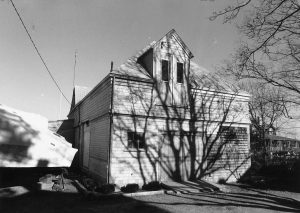In 1998, the Sippican Historical Society commissioned an architectural survey of Marion’s historic homes and buildings. The survey was funded one-half by the Sippican Historical Society and one-half by the Massachusetts Historical Commission. Due to the limits of funding, not all of the historic buildings were surveyed, but over 100 were catalogued and photographed. The results of the survey are in digital form on the Massachusetts Historical Commission’s website and in four binders in the Sippican Historical Society’s office (and at the Marion Town Clerk’s office).
Marion (Old Rochester) is one of the oldest towns in the United States, and the Sippican Historical Society maintains an extensive collection of documentation on its historic buildings. The Sippican Historical Society will preview one building a week so that the residents of Marion can understand more about its unique historical architecture.
This installment features 13 Hiller Street. Extending eastward from Front Street and turning southward to meet Main Street, Hiller Street is noteworthy as a side street with a gritty appearance. It was named Hiller Street around 1900 after the enterprising family who owned most of the residences and utilitarian structures bordering this back street. The structure at 13 Hiller Street is a wood shingle Queen Anne building that may have been built as a stable. An off-center hayloft opening appears at the second story beneath the eaves. Built c. 1880-1890, this building was owned by Theodore J. Tripp, a baker, by the early 1900s.
